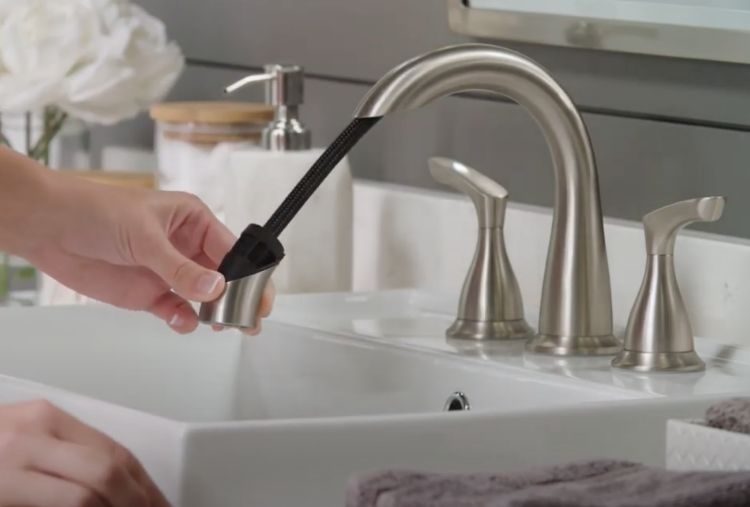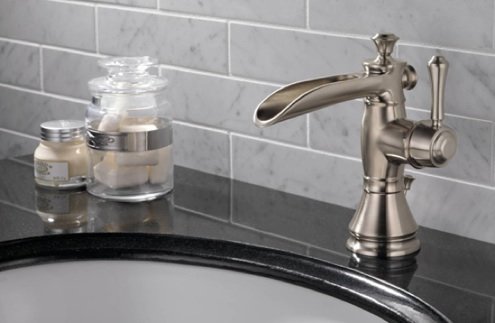What It's Crucial to Fix a Leaking Faucet
What It's Crucial to Fix a Leaking Faucet
Blog Article
In this article further down you can discover additional good help and advice related to Why It's Important to Fix Leaky Faucets.

Dripping taps could feel like a small aggravation, however their impact surpasses simply the inconvenience of the sound. From drainage to sustaining unneeded financial costs and health threats, disregarding a dripping tap can lead to various consequences. In this short article, we'll look into why it's critical to resolve this common house problem promptly and properly.
Waste of Water
Ecological Impact
Trickling faucets add considerably to water wastefulness. According to the Environmental Protection Agency (EPA), a single tap dripping at one drip per secondly can waste more than 3,000 gallons of water each year. This not just stress water sources but likewise affects ecological communities and wildlife depending on them.
Step-by-Step Guide to Taking Care Of a Dripping Tap
Tools Called for
Prior to attempting to deal with a dripping tap, collect the necessary devices, consisting of a flexible wrench, screwdrivers, substitute parts (such as washing machines or cartridges), and plumber's tape.
Common Faucet Issues and Their Solutions
Identify the sort of faucet and the particular issue causing the drip. Common troubles consist of damaged washing machines, rusty valve seats, or faulty O-rings. Refer to maker directions or online tutorials for detailed support on repair services.
Financial Expenses
Boosted Water Bills
Beyond the environmental effect, trickling taps can blow up water bills considerably. The built up wastefulness gradually equates right into higher utility expenditures, which might have been avoided with prompt repair work.
Potential Home Damages
Moreover, extended trickling can lead to damage to components and surface areas bordering the faucet. Water build-up can create discoloration, deterioration, and even structural issues if left unattended, leading to extra repair service expenses.
Health and wellness Worries
Mold And Mildew and Mildew Growth
The constant presence of moisture from a trickling tap produces a suitable atmosphere for mold and mold development. These fungi not just endanger interior air top quality yet likewise present wellness dangers, especially for people with respiratory conditions or allergic reactions.
Waterborne Conditions
Stationary water in trickling taps can come to be a breeding ground for bacteria and other virus, increasing the danger of waterborne illness. Contaminants such as Legionella bacteria prosper in stationary water, potentially bring about major illnesses when ingested or inhaled.
Do it yourself vs. Specialist Repair work
Benefits and drawbacks of Do It Yourself Fixing
While some might try to fix a dripping tap themselves, do it yourself fixings feature their very own collection of difficulties. Without proper knowledge and devices, do it yourself attempts can exacerbate the issue or cause incomplete repairs, lengthening the issue.
Benefits of Working With an Expert Plumber
Hiring a specialist plumber guarantees that the underlying source of the leaking tap is attended to effectively. Plumbing technicians have the know-how and equipment to identify and repair tap issues effectively, conserving time and minimizing the danger of more damages.
Ecological Responsibility
Individual Contribution to Preservation
Taking responsibility for repairing leaking taps aligns with broader initiatives toward water preservation and ecological sustainability. Every individual's actions jointly make a considerable influence on maintaining valuable sources.
Lasting Living Practices
By prioritizing timely fixings and adopting water-saving habits, people add to sustainable living practices that benefit both existing and future generations.
Safety nets
Regular Maintenance Tips
To stop trickling taps, execute regular upkeep such as cleaning up aerators, checking for leaks, and replacing damaged components quickly. Additionally, think about setting up water-saving tools or upgrading to much more efficient fixtures.
Relevance of Prompt Fixes
Attending to dripping taps as soon as they're observed stops more water wastage and prospective damage, eventually conserving both water and money in the future.
Impact on Residential Or Commercial Property Worth
Understanding of Well-Maintained Residential Or Commercial Property
Maintaining a home in good condition, consisting of dealing with upkeep concerns like dripping taps, enhances its viewed value and worth among prospective customers or lessees.
Influence on Resale Value
Properties with well-maintained plumbing fixtures, including faucets, command greater resale values in the realty market. Resolving dripping faucets can contribute to a positive perception during property evaluations and settlements.
Final thought
Addressing a leaking tap exceeds mere comfort; it's a vital action towards conserving water, lowering economic costs, and protecting health and residential property. Whether with DIY repairs or specialist support, taking action to take care of dripping taps is a tiny yet impactful way to advertise liable stewardship of sources and add to a healthier, a lot more sustainable future.
How to Fix a Dripping or Leaky Faucet
A leaking faucet is one of the most common problems that homeowners encounter, but it being commonplace doesn’t make it any less annoying. The constant drip drip drip of a leaking bathtub faucet, showerhead, or sink tap can disturb your home’s serenity. Left neglected, a dripping faucet can also result in higher water bills and discoloration or mold growth in your sink or plumbing fixtures.
Fortunately, you don’t have to be a trained plumber to know how to stop a dripping faucet. With some basic tools, replacement parts, and a little patience, leaky faucet repair is a breeze. In this article, we’ll explain what causes dripping faucets and how you can fix them.
What Causes a Leaking Faucet?
Kitchen and bathroom faucets come in all manner of designs, but most involve some combination of valves, O-rings, seals, and washers. The O-ring is usually the weakest link, but any one of these pieces can wear down over time. Heat, moisture, temperature fluctuations, minerals, mold, and movement can contribute to warping and corrosion, breaking the watertight seal. This just comes with the territory of being a homeowner. Everything is always subject to wear and tear, and some component parts of your appliances and fixtures need to be replaced on occasion. At least replacement O-rings are cheap!
More rarely, dripping faucets can be a symptom of excessively high water pressure. Were this the case in your home, you would probably notice that the leak is not isolated to one faucet. Water pressure issues are harder to resolve on your own. We recommend contacting a professional plumber if you suspect your water pressure is too high.
How to Fix a Dripping Faucet
Pipe wrench or monkey wrench Allen wrench set Screwdrivers Old towel or rag Shut off the water.
Before you do anything, you need to turn off the water to keep from drenching your kitchen or bathroom. You should find a valve under the sink and against the wall. Once you’ve turned this valve, try turning the faucet on to confirm that the water source has been cut off.
If you can’t locate your local valve for the faucet you’re working on, you can always shut off the water to the house at the main valve. Of course, this will prohibit anyone from using the sinks, showers, or toilets while you’re working on the faucet that’s giving you trouble.
Plug or block the drain.
You’ll be disassembling the faucet and removing some small bits of hardware. Plug the drain with a stopper or rag to avoid the possibility of a small screw falling into your P-trap.
Take apart the faucet assembly.
There are several varieties of kitchen and bathroom faucets, each with its own manner of assembly. For detailed instructions on how to disassemble your faucet, you can refer to the fixture’s manual or contact the manufacturer. If you know whether you have a ball, disc, cartridge, or compression faucet, you can find detailed schematics online.
In general, you need to begin by removing the faucet handles. You might notice a small screw that you’ll need to remove with a screwdriver or Allen wrench. If you don’t see any visible securing hardware, it’s likely hidden under a decorative cap that can be unscrewed or popped off with flathead screwdriver.
Remove each piece methodically, consulting a schematic when necessary. Take notes or arrange the pieces in such a way to make it easier to correctly reassemble the faucet later.
Remove the cartridge.
Once you’ve removed the handles and securing hardware, you should be able to remove the valve cartridge or stem. Some cartridges will slide right out. Other faucet models will require you to loosen a nut with a pipe wrench before you can remove the valve stem.
Examine the exposed hardware.
With the cartridge or stem removed, inspect the component parts. Check the rubber O-rings for wear and tear. Also examine the seat washer for corrosion or other damage. These pieces are usually the responsible parties for a dripping faucet, but it’s worth inspecting the other component parts while you have the faucet disassembled.
Find replacement parts.
Once you’ve identified which faucet component has failed, find an identical replacement. Your local hardware store should have O-rings, seat washers, and other standard components in stock. If you have a luxury or uncommon faucet, you may have to contact the manufacturer for a replacement part.
It’s a good idea to take your old parts with you to the hardware store so you can compare them with the store’s inventory and be sure you’re purchasing the correct replacement.
Reassemble the faucet.
With your new parts in hand, reconstruct the faucet and handles. Don’t be tempted to overtighten screws or nuts. You might think this could create a better seal, but it can instead damage or bend a delicate part of the assembly and create a new problem for you.
Turn on the water and test the faucet.
The only thing left to do is test your work. Unplug the sink, turn the water back on, and try the faucet. Congratulate yourself on a job well done!
https://www.libertyhomeguard.com/how-to-fix-a-dripping-or-leaky-faucet/

We were shown that report about 4 Common Reasons for a Leaky Faucet from a pal on our other web address. Loved our blog posting? Please quickly share it. Help another person find it. Thanks for your time spent reading it.
Report this page